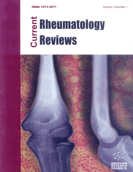Abstract
Background: Metabolic syndrome (MetS) is characterized by insulin resistance, high blood pressure/ sugar, dyslipidemia, and obesity. Whether MetS and its components affect the development of Behçet's Disease (BD) remains unclear.
Aims: The aim was to determine the frequency of MetS among BD patients and to study its relationship with disease characteristics.
Methods: The study included 1028 adult BD patients recruited from 18 specialized rheumatology centers. 51 healthy matched control were considered. Behçet Disease Current Activity Form (BDCAF) and the BD damage index (BDI) were estimated. Adult Treatment Panel-III criteria were used to define MetS.
Results: The mean age of patients was 36.8 ± 10.1 years, M:F 2.7:1 and disease duration 7.01 ± 5.2 years. Their mean BDCAF was 5.1 ± 4.6 and BDI 5.5 ± 2.8. MetS was present in 22.8% of patients and in 5.9% of control (3.9 fold higher-risk). Patients with MetS had a significantly increased age at onset (31.8 ± 9.2 vs. 29 ± 8.5 years) and higher frequency of genital ulcers (96.2% vs. 79.7%), skin involvement (73.1% vs. 50.4%), arthritis (48.3% vs. 29.1%) (p<0.0001) and CNS manifestations (18.8% vs. 13%) (p=0.042) compared to those without it. Eye involvement was significantly increased in those with MetS (82.1% vs. 74.2%) (p=0.003) with increased frequency of posterior uveitis (67.1% vs. 43.5%), retinal vessel occlusion (35.9% vs. 21.3%), retinal vasculitis (41.9% vs. 26.4%) (p<0.0001) and vitritis (37.2% vs. 24%) (p=0.001). BDCAF was significantly lower (3.9 ± 4.3 vs. 5.6 ± 4.6) and BDI higher (7.4 ± 2.7vs5 ± 2.6) (p<0.0001).
Conclusion: BD patients with MetS are predisposed to mucocutaneous, musculoskeletal, neuropsychiatric and ocular manifestations with consequently increased damage. The involvement of the deeper structures of the eye should alarm rheumatologists to keep in mind that all patients should have an eye examination, especially those with MetS.
Keywords: Metabolic syndrome, Behçets disease, eye, neuropsychiatric, BDI.
[http://dx.doi.org/10.1155/2018/1419352] [PMID: 30050389]
[http://dx.doi.org/10.1080/1744666X.2016.1205486] [PMID: 27351485]
[http://dx.doi.org/10.1007/s10067-019-04570-w] [PMID: 31119493]
[http://dx.doi.org/10.1002/art.24642] [PMID: 19790126]
[http://dx.doi.org/10.1136/gut.49.5.725] [PMID: 11600479]
[http://dx.doi.org/10.1186/s12933-018-0762-4] [PMID: 30170598]
[http://dx.doi.org/10.5402/2012/760484] [PMID: 22530146]
[http://dx.doi.org/10.1136/jcp.2007.048363] [PMID: 18505888]
[http://dx.doi.org/10.3390/nu12030806] [PMID: 32197513]
[http://dx.doi.org/10.1016/j.physbeh.2007.10.010] [PMID: 18037457]
[http://dx.doi.org/10.1161/ATVBAHA.107.147835] [PMID: 17823366]
[http://dx.doi.org/10.3810/pgm.2012.01.2514] [PMID: 22314111]
[http://dx.doi.org/10.1007/s40257-013-0034-8] [PMID: 23760648]
[http://dx.doi.org/10.1016/j.ejr.2016.11.001]
[http://dx.doi.org/10.1093/toxsci/kfx233] [PMID: 29106690]
[http://dx.doi.org/10.1111/jdv.12107] [PMID: 23441863]
[http://dx.doi.org/10.1093/rheumatology/38.8.728] [PMID: 10501420]
[http://dx.doi.org/10.1111/1756-185X.14166] [PMID: 34288457]
[http://dx.doi.org/10.1001/jama.285.19.2486] [PMID: 11368702]
[http://dx.doi.org/10.1186/1758-5996-5-74] [PMID: 24252564]
[http://dx.doi.org/10.1111/1346-8138.15809] [PMID: 33961305]
[http://dx.doi.org/10.2174/1874312901812010139] [PMID: 30258503]
[http://dx.doi.org/10.14740/jh230e]
[http://dx.doi.org/10.1016/j.arcmed.2010.05.008] [PMID: 20637370]
[http://dx.doi.org/10.1038/s41598-021-81972-4] [PMID: 33510251]
[http://dx.doi.org/10.5114/ada.2019.89509] [PMID: 31839779]
[http://dx.doi.org/10.1111/jdv.14601] [PMID: 28940547]
[http://dx.doi.org/10.36849/JDD.2020.5337] [PMID: 32845115]
[http://dx.doi.org/10.1155/2014/724780] [PMID: 25009743]
[http://dx.doi.org/10.1002/JLB.MA0119-030RR] [PMID: 31287586]
[http://dx.doi.org/10.1001/archopht.1970.00990040453009] [PMID: 5492449]
[http://dx.doi.org/10.1076/0927-3948(200009)831-KFT141] [PMID: 11120575]
[http://dx.doi.org/10.2147/OPTH.S287298] [PMID: 33262566]
[http://dx.doi.org/10.3389/fendo.2019.00788] [PMID: 31824416]
[http://dx.doi.org/10.1016/j.clindermatol.2017.09.016] [PMID: 29241760]
[http://dx.doi.org/10.7575/aiac.abcmed.v.8n.4p.8]










